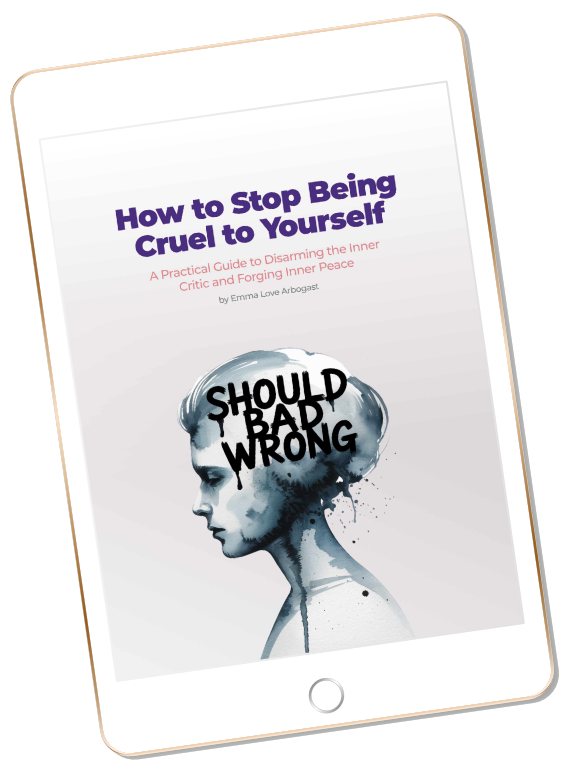What is state shifting and how is it different from toxic positivity?
State shifting is learning to be happy for no reason. It is the practice of consciously shifting your state of mind or mood to a happier one, by self-generating positive emotions. Over time, it can shift your baseline mood.
“Toxic positivity” is a term used to criticize various ways of avoiding or denying negative emotions or experiences by focusing only on the positive. The dangers of doing this include self-delusion, being out of touch with our genuine feelings, living a shallow existence, avoiding grief, and getting on everyone’s nerves. I am not advocating that.
Habitual feelings vs spontaneous feelings
Our brain largely operates on auto-pilot. It repetitively thinks the same thoughts, and feels the same feelings based on those thoughts. This is sort of our background mood, or baseline emotional state.
Then, throughout our day, specific feelings arise spontaneously that have to do with what is happening in our environment, or specific things we are thinking about.
We want to keep those spontaneous emotions, as they are useful and help us navigate our needs and tend to our wellbeing. But the background thoughts and feelings can often be stuck in a negative gear for no real reason except habit. That’s what state shifting can change.
State shifting is practicing being happy for no reason, until it becomes a habit.
State shifting is repeatedly interrupting a habitual negative mood and practicing a positive mood, for no reason at all. It is the practice of self-generating positives states.
It’s rejecting the idea that we can only feel happy if a specific thing happens, and deciding to feel happy anyway, right now. Once you realize this is a possibility, it becomes pretty darn attractive. We are so conditioned to think we have to have external things to be happy, that it can just not occur to us that it’s not actually true.
Then it’s just a matter of reminding yourself to do it. I recommend a sticky note by your computer or on your phone that just says, “Be happy anyway?” It’s worded as a question on purpose – think of it as an invitation, not a task. Don’t put pressure on it. If you are not able to shift in any given moment, don’t force it. When you can shift, do it. When you can’t, don’t worry about it. It will still work gradually over time.
Some people will use a specific happy memory to help generate positive emotions, but I recommend switching to pure self-generation as quickly as you can. You don’t really want it to be dependent on anything, even a memory or a thought.
I think of state shifting as a technique to rewire your brain to have a higher baseline mood. It doesn’t eliminate anything negative that is based in reality – your real experiences and needs. But it can eliminate, over time, negative feelings that are purely habitual.
State shifting is recognizing that our brain runs on autopilot, and then reprogramming that autopilot to be happier, through repetition.
Do not use state shifting to avoid pain or trauma.
Using state-shifting the wrong way, IMHO, is to try to shift out of painful or overwhelming spontaneous feelings, simply because they are painful or overwhelming and you don’t want to experience them. That is almost guaranteed to just lead to emotional suppression or compartmentalization.
State-shifting is not a trauma healing technique. You should not use it to deal with triggers. It isn’t meant for that. In fact, what I recommend for processing trauma is turning toward the pain, not away from it.
State shifting has made me a much happier person.
After a few solid months of practicing “being happy for no reason”, my internal baseline really did shift.
It didn’t heal my trauma, or fix my insecure attachment style, or anything else it wasn’t designed to do. But it did significantly help with my depression (along with a lot of other work, like befriending the inner critic and doing trauma healing work).
It also didn’t destroy my motivation. Hating your life is not good motivational fuel to begin with, so don’t worry about losing it. Passion, meaning, and enjoying being alive are much better motivators.
It also gave me a sense of power over my mood. I don’t feel at the mercy of habitual negativity anymore. I know I can feel better by my own choices, and that is very empowering.
For more on these topics, I recommend two of my other articles:

Free Ebook – How to Stop Being Cruel to Yourself
Permanently stop self-criticism, self-doubt, and comparing yourself to others.
More questions about General Healing & Growth

Hi there! I'm Emma and I write about self-liberation. My writing is meant to share my process & inspire your own. If you want more frequent/current writing, visit my Substack Sparkly Dark.
If my writing has helped you, you can leave a tip at buymeacoffee.com, leave a comment below, learn more about me, or follow me on Instagram.
Thanks so much for reading! ~Emma